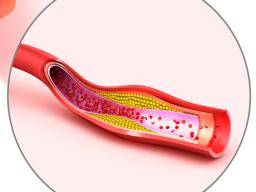
For men and women who wish to change their sexual orientation, gender affirming surgery can be done. It is a procedure to alter the penis or skin color of a male, female, or vice versa. Some procedures include a hysterectomy or orchiectomy. Other procedures include penis inversion and inversion.
Hysterectomy
A surgical procedure that alters a male's gender from a woman to a man, called hysterectomy or gender affirming surgery. 1.4% of the population are transgender. Gender dysphoria can lead to emotional and physical pain. Surgery is an option for transgender men. Medical management is the most common treatment. Some common surgical procedures for transgender men include hysterectomy and bilateral salpingo-oophorectomy. According to the American College of Surgeons' National Surgical Quality Improvement database, only 3.3% of transgender men underwent hysterectomy for a change in gender.
It is relatively recent and still in development to perform hysterectomy for gender affirmation. It has been done historically for pathological reasons. A coexisting diagnosis of gender dysphoria may have resulted in a hysterectomy. This procedure is now covered by insurance.

Orchiectomy
The first step in a transgender patient’s surgical transition is the orchiectomy. This is the removal of the testicular tissue. It eliminates the testicles and decreases the production of testosterone, the male hormone. This surgery can lower blood clot risk and simplify the patient's hormonal regimen.
This procedure can be performed on an outpatient basis and is quite simple. The recovery time depends on the surgeon and the technique used. It can take anywhere from two to eight weeks. It can be covered by Medicare, private insurance or the individual's own health insurance.
Inversion of skin, penis
The most well-known method of transvaginal surgery is the inversion of skin, penis and genital reconstruction. It involves inverting the penis into a vagina in order to recreate the natural look of a woman’s vagina. It takes approximately three to five hours, and can take several days for recovery. After surgery, a special dressing is placed inside the vagina to protect the skin in its new position.
During the procedure, a standardized protocol is applied. Aftercare instructions will be provided by the doctor to the patient. You will be given a kit by the medical team to perform follow-up dilations at your home. You will also receive follow-up emails and follow-up appointments with your surgeon.

Time to recover
Post-surgery is an essential component of gender-affirming surgeries, which involve converting a male penis from a feminine one. Depending on the type of surgery, recovery can take anywhere from 4-8 weeks. A mastectomy is most commonly performed, but it's also possible to have a breast augmentation or vaginoplasty. Both procedures are best done after at least one week of rest. However, they can take as long as five to six weeks.
Gender-affirming surgery aims to minimize testosterone production in the body. This procedure can reduce the need to take hormone-suppressive medication and estrogen therapy. This procedure may allow you to have a natural child. Recovery time for gender affirming surgery male to female differs depending on the procedure performed and the patient's health.